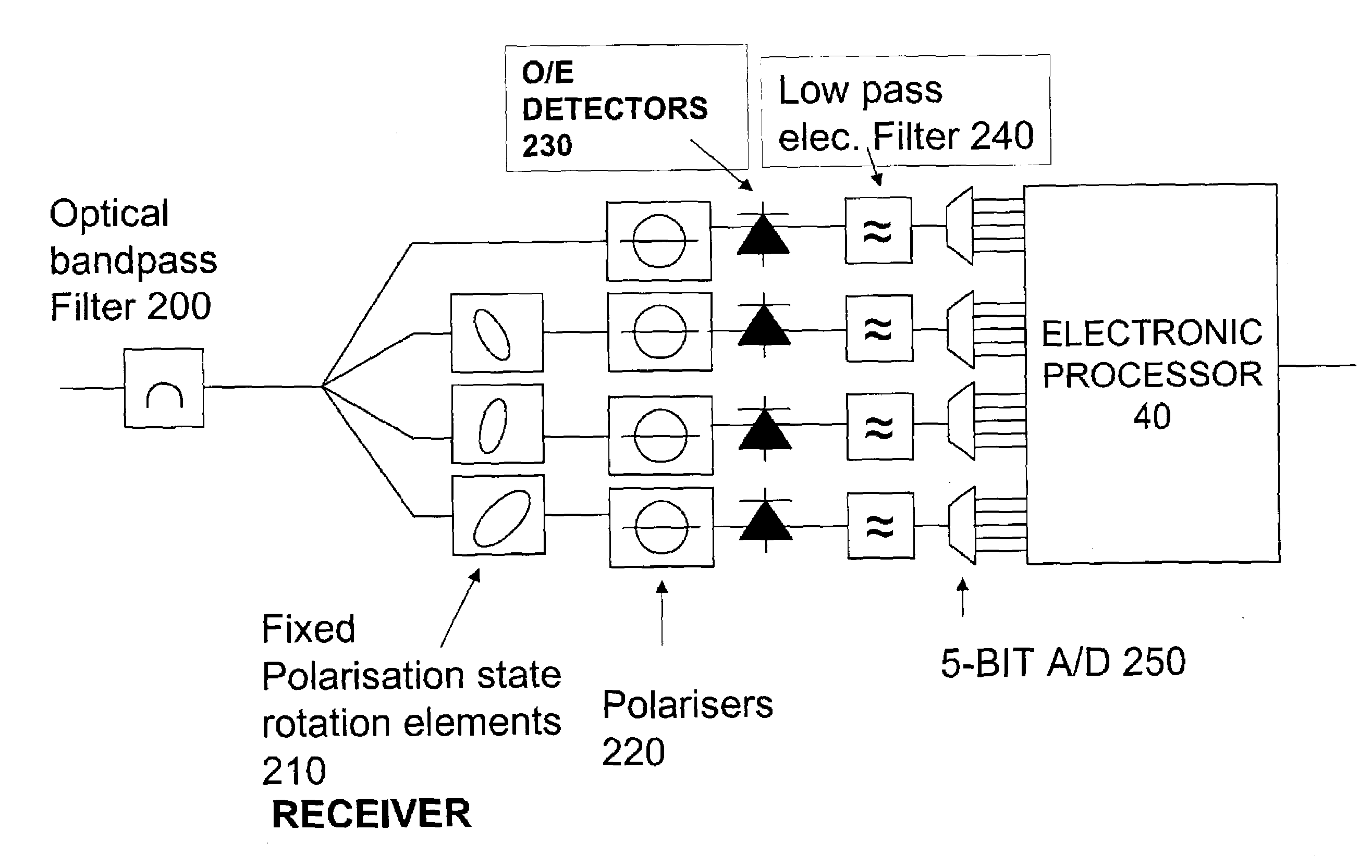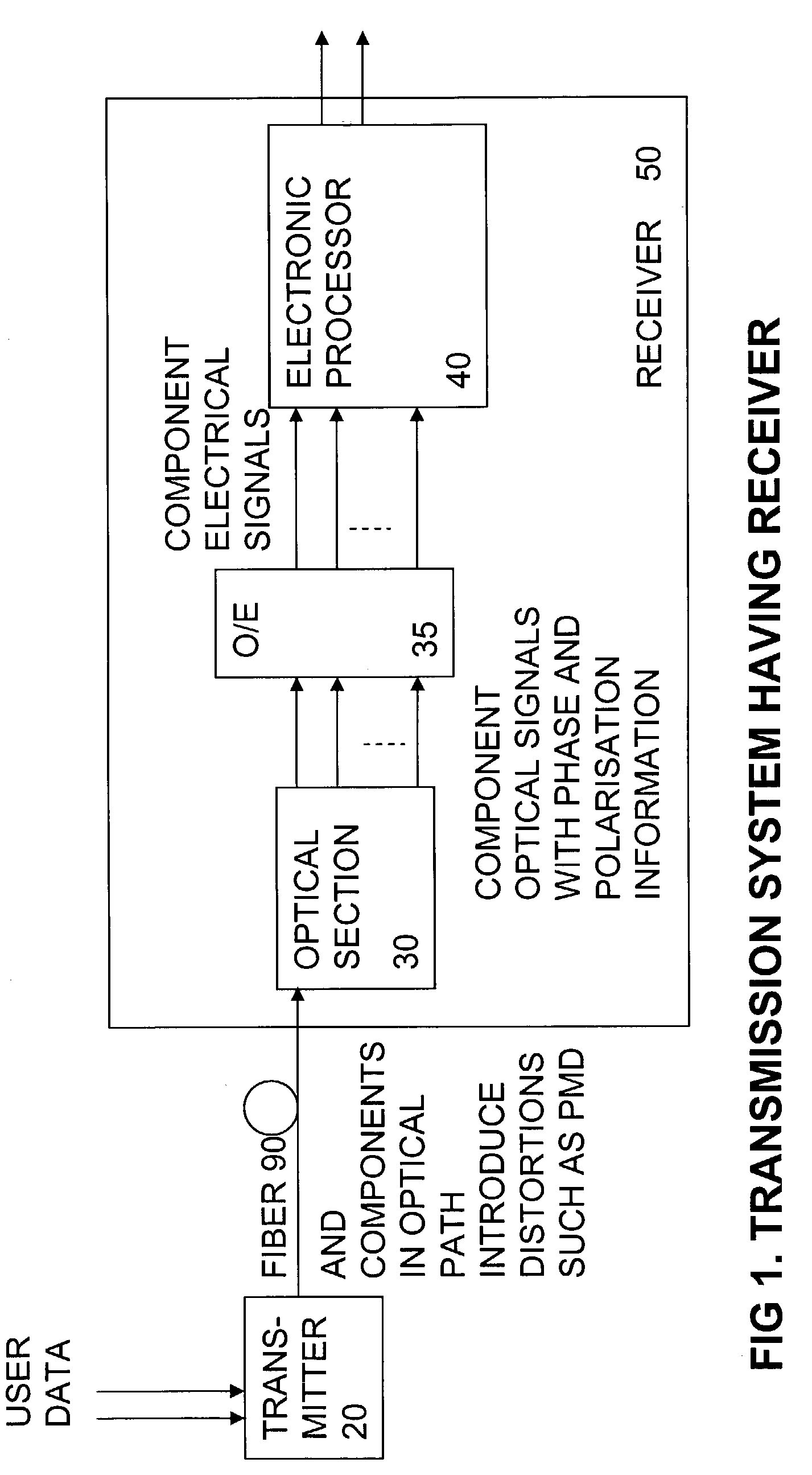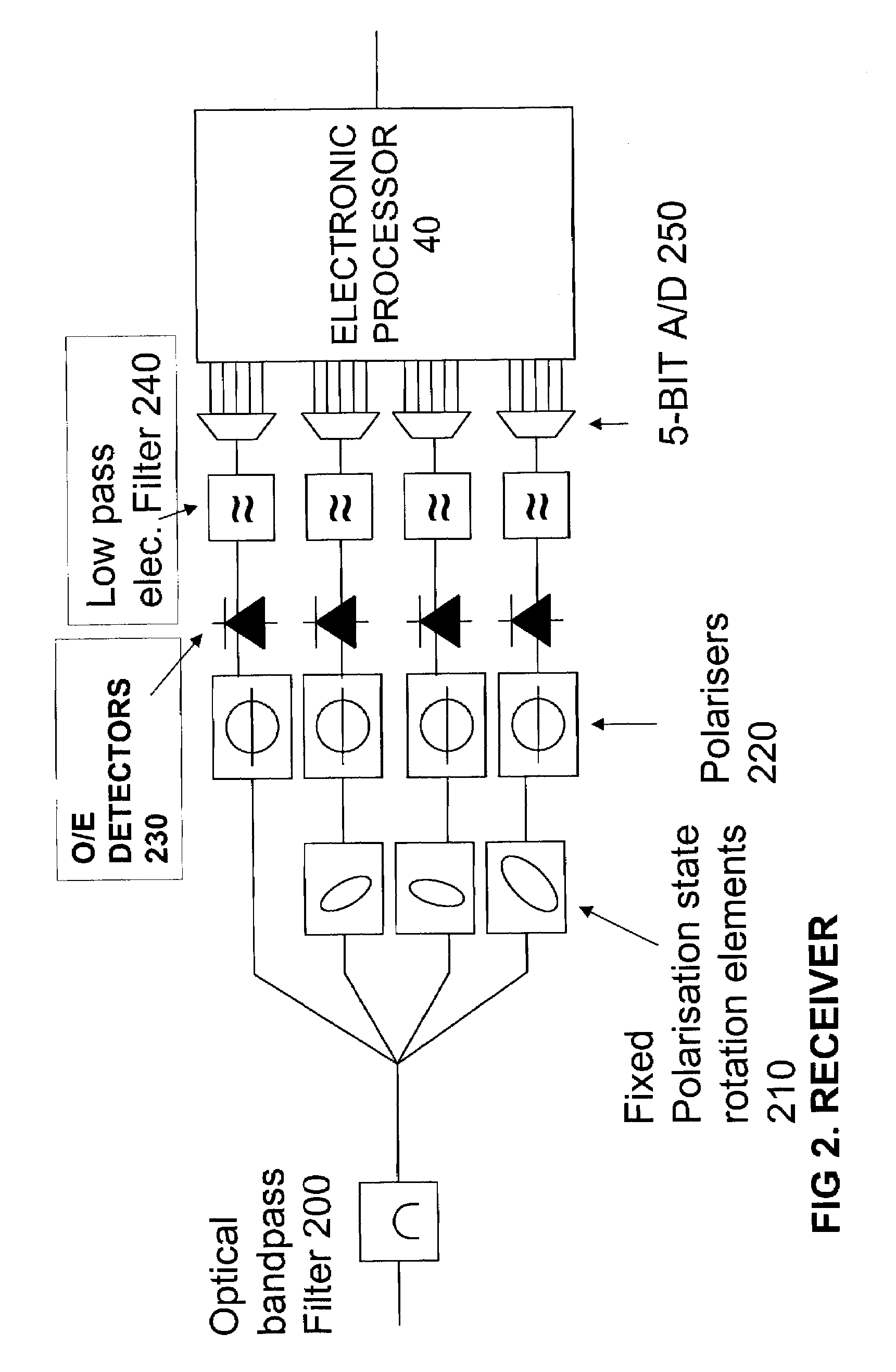Polarization diversity receiver for optical transmission system
a technology of optical transmission system and polarization diversity, applied in electromagnetic transmission, electrical equipment, transmission, etc., can solve problems such as substantial noise penalty in input states, and achieve the effects of reducing the number of electrical signals, reducing size and cost, and relatively simple optical sections
- Summary
- Abstract
- Description
- Claims
- Application Information
AI Technical Summary
Benefits of technology
Problems solved by technology
Method used
Image
Examples
Embodiment Construction
FIG. 1, Transmission System
[0087]FIG. 1 shows an example of an optical transmission system according to an embodiment of the invention. It includes a transmitter 20 coupled to a transmission fiber 90. User data is transmitted by the transmitter along the fiber following conventional principles. In typical systems the fiber may be many kilometres in length. The fiber and components in the optical path such as optical amplifiers and compensators, can introduce noise and distortions such as PMD. The receiver 50 tries to pick out the original signal from the noise.
[0088]The receiver includes an optical section 30 which outputs component optical signals which include substantially all of the phase and polarisation information of the received optical signal. The component optical signals are converted into corresponding component electrical signals by optical to electrical converter 35 typically in the form of conventional direct detection square law detectors. The component electrical si...
PUM
 Login to View More
Login to View More Abstract
Description
Claims
Application Information
 Login to View More
Login to View More - R&D
- Intellectual Property
- Life Sciences
- Materials
- Tech Scout
- Unparalleled Data Quality
- Higher Quality Content
- 60% Fewer Hallucinations
Browse by: Latest US Patents, China's latest patents, Technical Efficacy Thesaurus, Application Domain, Technology Topic, Popular Technical Reports.
© 2025 PatSnap. All rights reserved.Legal|Privacy policy|Modern Slavery Act Transparency Statement|Sitemap|About US| Contact US: help@patsnap.com



